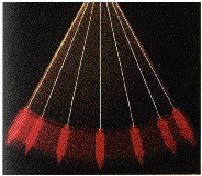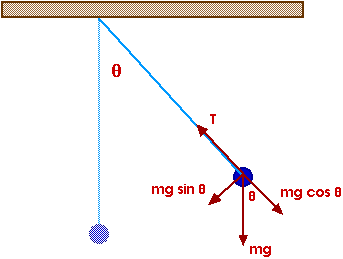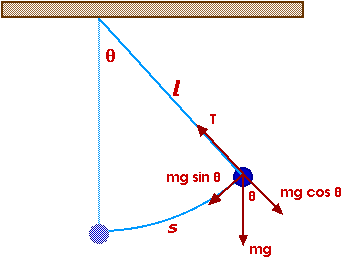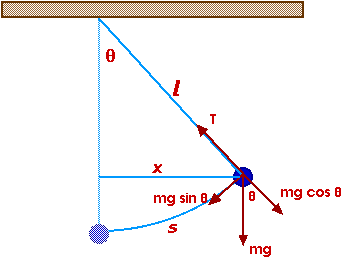
Simple Pendulum

The net restoring force is
Fnet = - m g sin 
- m g sin
= m a
a = - g sin
And this is not exactly what we had for our prototype,
Fnet = - k x = ma a = - ( k / m ) x
Or is it?
Look more closely at this sin
:
sin = opp / hyp
sin
= opp / hyp
sin
= x / l
And for small angles, this is nearly equal to
sin = s / l
Now we have
a = - g sin 
or
a = - g (s / l) or
a = - ( g / l ) s
where s is the displacement from equilibrium.
So this simple pendulum is a SHO for small angular displacements!
It is interesting and useful to look at the sine function as a power series expansion
sin x = x - (x3/3!) + (x5/5!) - (x7/7!) + . . .
That means, for small angles x,
sin x = x
and sin x deviates from that like x3 so we must go to very large angles x to see a difference from sin x = x. If we watch a simple pendulum with very large amplitude we find that it is not a simple harmonic oscillator (SHO). But it is a very close approximation for small amplitudes!
|
|
|
|
|
|
|
|
||
|
|
|||


